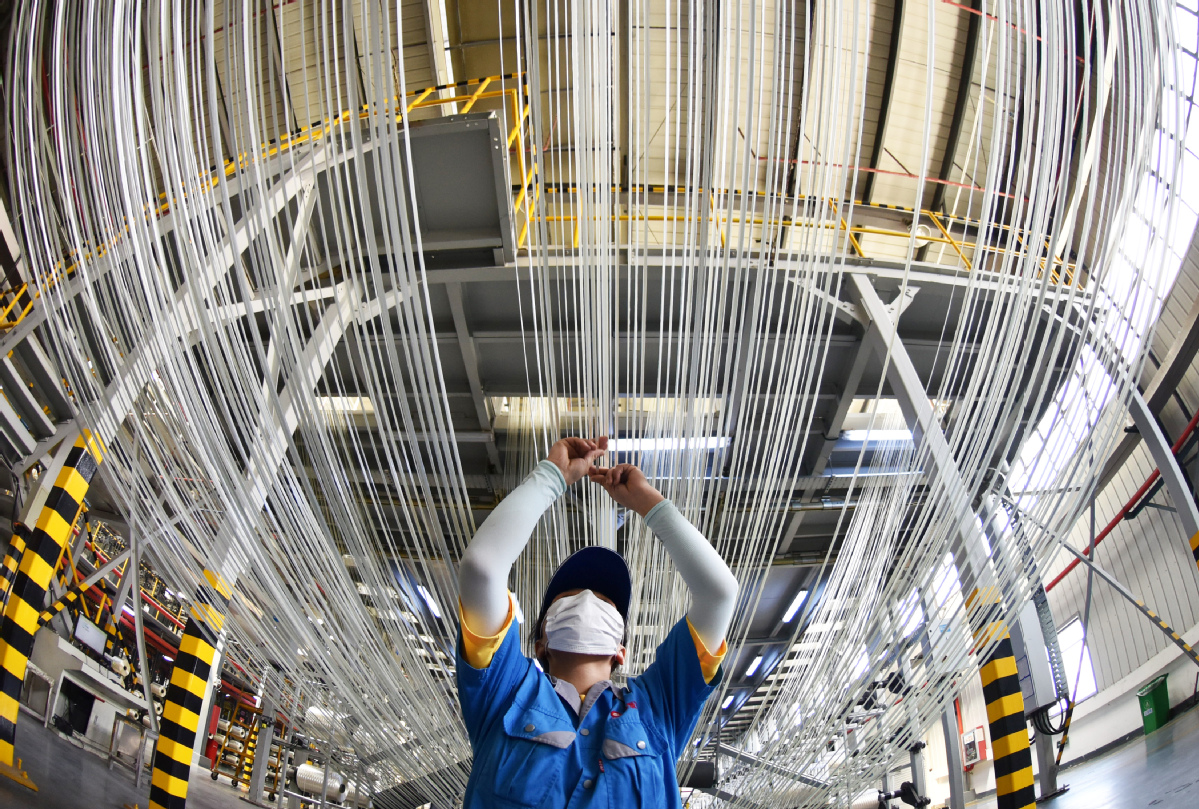Manufacturing data gloomy, but China still has global advantage
China Daily | Updated: 2021-11-02 07:47

China's manufacturing purchasing managers index fell 0.4 percentage points from the previous month to 49.2 percent in October, continuing in the contraction zone for two consecutive months and hitting a new low since March 2020, data released by the National Bureau of Statistics show.
In specific terms, the PMI was 50.3 percent for large enterprises, down 0.1 percentage points from the previous month, but still above the critical level; 48.6 percent for medium-sized enterprises, down 1.1 percentage points from the previous month and below the critical level; and 47.7 percent for small businesses, unchanged from the previous month. This indicates large enterprises are better equipped to tackle market pressure.
SMEs, especially small businesses, are the main market drivers of economic growth and employment providers. Which explains why the central government has been helping them overcome their financing difficulties. Only if market players are helped to survive and maintain market vitality can domestic circulation maintain its basic momentum.
Data show that the five subindexes that make up the PMI of the manufacturing sector-the production index, the new order index, the raw material inventory index, the employment index and the supplier delivery time index-are below the critical level. As winter approaches, the increasing demand for energy will force China to work out a systematic solution.
In the context of blocked global supply chains and rising raw material prices, China should expand energy imports as much as possible, increase domestic energy production and supply, and strengthen supervision to crack down on hoarding and maintain the balance between supply and demand. The new development paradigm requires a new development model, but the transition from traditional to clean energy cannot happen overnight.
As long as market players can withstand the supply chain crisis brought about by high production costs and insufficient supply, the manufacturing industry will remain prosperous.
The global supply chain crisis has been triggered by the pandemic, which has led to a global energy and chip shortage and increased production costs. Given the resurgence of the epidemic in the United States and Europe, the global supply chain crisis will continue for some time.
The over-exuberant demand brought about by the global economic recovery in the first three quarters has also exacerbated the supply chain crisis. Despite the slowdown in the manufacturing sector in October, China's GDP grew by 9.8 percent year-on-year in the first three quarters of this year, and this means China's economy still has a comparative advantage.
























